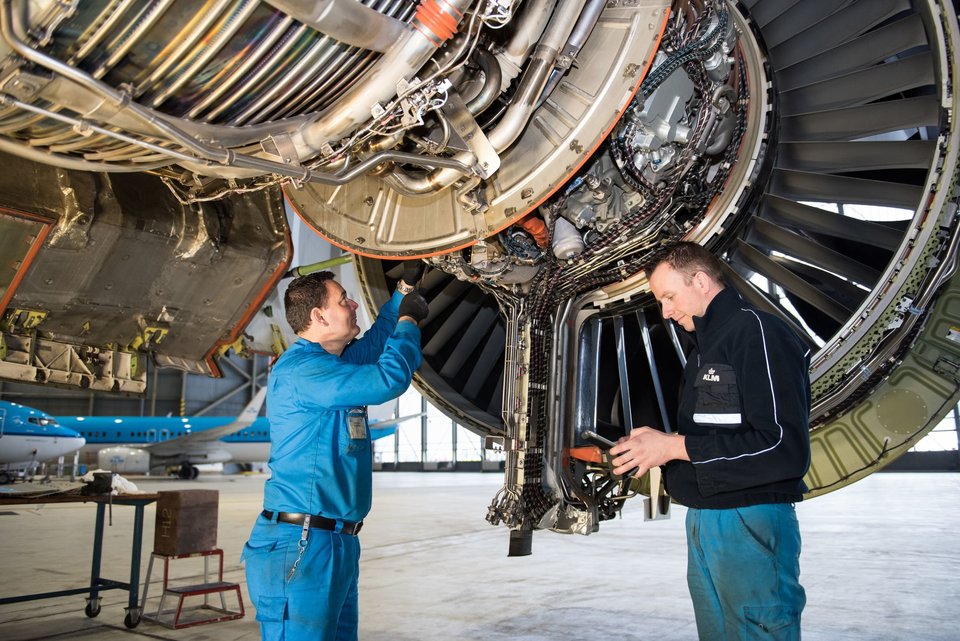Aircraft parts that tell us when they need replacement. Much less residual waste due to self-thinking production lines for materials. Being able to certify new, sustainable, technology faster. But also: swarms of small drones working together to rescue people or detect gas leaks. Artificial Intelligence and Machine Learning are widely used in aerospace engineering to explore solutions to societal problems.
On the occasion of AI month, we compiled some of our stories.
“We're using AI/ML to make flying more eco-friendly in a few smart ways. Like we manage energy and water at home to reduce waste, we're helping airports and airlines use their resources better for cleaner and more efficient operations. For instance, by using an AI-driven digital twin of airlines (i.e., a virtual version of an airline), we fine-tune sustainability strategies like adopting hydrogen-powered planes or considering different carbon policies. We are also using AI models to help us improve flight fuel plans and reduce unnecessary fuel loads or to predict when aeroplane parts need fixing, reducing maintenance and waste while guaranteeing safe and efficient flights.”
B.F. (Bruno) Santos, Associate Professor Air Transport & Operations, TU Delft
“Researchers at TUD are developing a “brain" using AI for future aircraft and wind turbines, such that they can “think” during operations and smartly adapt their shapes, just like birds. This allows online real-time simultaneous aerodynamic performance optimisation, gust/manoeuvre alleviation, and flutter suppression, leading to sustainable flight and efficient energy harnessing without compromising safety.”
Roeland De Breuker, Associate Professor Aerospace Structures and Materials, TU Delft

“Aircraft certification is one of the key bottlenecks to achieving emissions-free aviation by 2050 because it takes far too long and is especially difficult for novel designs. Artificial intelligence promises to accelerate the design, engineering, and manufacturing processes, bringing data-driven confidence that can significantly improve the certification process. By combining physics-informed models with machine learning, we can more quickly certify both iterative and innovative aircraft designs, helping us to achieve clean skies by 2050.”
Nathan Eskue, Associate Professor of Artificial Intelligence in Manufacturing, TU Delft
_______________________________________________________________________________
“In future we may rely on AI to ensure a plane is safe to fly, for example by using it to automate quality inspections after manufacturing. We could even use it to warn us if a plane isn’t being used in the way it was designed, so we can re-evaluate if the way it’s used is safe. But what do we need to do to ensure the AI itself is reliable?”
John-Alan Pascoe, Assistant Professor Aerospace Structures and Materials, TU Delft
The Center of Excellence in AI for Structures aims to bring together academics, researchers, industrial professionals, policy makers and students with the objective to create a multi-disciplinary community, advance the research integration and implementation, share knowledge and facilities, contribute to the trustworthiness of new technologies from industry and bring research and knowledge closer to society.
"We welcome everyone who wants to contribute on the vision of the Center of Excellence in AI for Structures to build a multi-disciplinary community, promote and participate in our activities and bring closer the emerging technologies of AI and digitalization to our society."
D. (Dimitrios) Zarouchas, Associate Professor, TU Delft

![[Translate to English:] [Translate to English:]](https://filelist.tudelft.nl/_processed_/9/e/csm_cover_candidate_1_orange_11b89c0e20.jpg)
![[Translate to English:] [Translate to English:]](https://filelist.tudelft.nl/_processed_/c/c/csm_Still_09_d6820e6704.png)
![[Translate to English:] [Translate to English:]](https://filelist.tudelft.nl/_processed_/d/6/csm__FAU2074_406b067eab.jpg)


![[Translate to English:] [Translate to English:]](https://filelist.tudelft.nl/_processed_/4/9/csm_Jin%20Maruhashi%2001_8b4897dfc2.jpg)
![[Translate to English:] [Translate to English:]](https://filelist.tudelft.nl/_processed_/5/5/csm__FAU0973%20kopi%C3%ABren%20variant%202-1_312633ac02.jpg)
![[Translate to English:] [Translate to English:]](https://filelist.tudelft.nl/_processed_/2/3/csm__FAU0891%20bewerkt_f32ee3eda9.jpg)

![[Translate to English:] [Translate to English:]](https://filelist.tudelft.nl/_processed_/2/6/csm_GS_LR%20061%281%29_3ac424b4bd.jpg)
